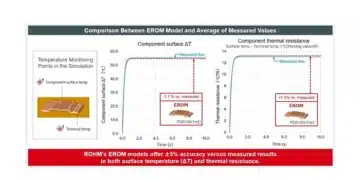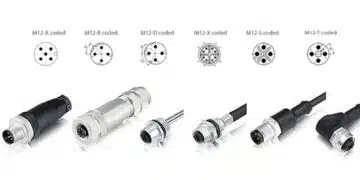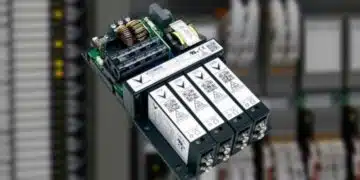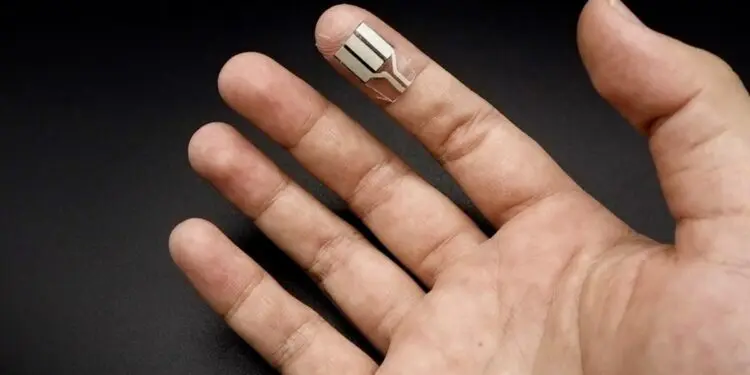A new wearable device turns the touch of a finger into a source of power for small electronics and sensors. Engineers at the University of California San Diego developed a thin, flexible strip that can be worn on a fingertip and generate small amounts of electricity when a person’s finger sweats or presses on it.
What’s special about this sweat-fueled device is that it generates power even while the wearer is asleep or sitting still. This is potentially a big deal for the field of wearables because researchers have now figured out how to harness the energy that can be extracted from human sweat even when a person is not moving.
This type of device is the first of its kind, said co-first author Lu Yin, a nanoengineering Ph.D. student at the UC San Diego Jacobs School of Engineering. “Unlike other sweat-powered wearables, this one requires no exercise, no physical input from the wearer in order to be useful. This work is a step forward to making wearables more practical, convenient and accessible for the everyday person.”
The new wearable energy harvester is described in a paper published July 13 in Joule.
The device also generates extra power from light finger presses—so activities such as typing, texting, playing the piano or tapping in Morse code can also become sources of energy.
“We envision that this can be used in any daily activity involving touch, things that a person would normally do anyway while at work, at home, while watching TV or eating,” said Joseph Wang, a professor of nanoengineering at the UC San Diego Jacobs School of Engineering and the study’s senior author. “The goal is that this wearable will naturally work for you and you don’t even have to think about it.”
The device derives most of its power from sweat produced by the fingertips, which are 24-hour factories of perspiration. It’s a little-known fact that the fingertips are one of the sweatiest spots on the body; each one is packed with over a thousand sweat glands and can produce between 100 to 1000 times more sweat than most other areas on the body.
“The reason we feel sweatier on other parts of the body is because those spots are not well ventilated,” said Yin. “By contrast, the fingertips are always exposed to air, so the sweat evaporates as it comes out. So rather than letting it evaporate, we use our device to collect this sweat, and it can generate a significant amount of energy.”
But not just any sweat-fueled device can work on the fingertip. Collecting sweat from such a small area and making it useful required some innovative materials engineering, explained Yin. The researchers had to build different parts of the device to be super absorbent and efficient at converting the chemicals in human sweat into electrical energy.
Yin worked on this project with UC San Diego nanoengineering Ph.D. students Jong-Min Moon and Juliane Sempionatto, who are the study’s other co-first authors, as part of a team led by Wang, who is also the director of the Center for Wearable Sensors at UC San Diego. Wang and his team pioneered sweat-fueled wearables 8 years ago. Since then, they have been building on the technology to create new and better ways to power wearables using sustainable sources, such as the wearers themselves and their surroundings.
This latest energy harvesting technology is especially unique in that it could serve as a power source anytime, anywhere. It does not have the same limitations as, say, solar cells, which only work under sunlight, or thermoelectric generators, which only work when there’s a large temperature difference between the device and the surroundings.
How It Works
The device is a thin, flexible strip that can be wrapped around the fingertip like a Band-Aid. A padding of carbon foam electrodes absorbs sweat and converts it into electrical energy. The electrodes are equipped with enzymes that trigger chemical reactions between lactate and oxygen molecules in sweat to generate electricity. Underneath the electrodes is a chip made of what’s called a piezoelectric material, which generates additional electrical energy when pressed.
As the wearer sweats or presses on the strip, the electrical energy gets stored in a small capacitor and is discharged to other devices when needed.
The researchers had a subject wear the device on one fingertip while doing sedentary activities. From 10 hours of sleep, the device collected almost 400 millijoules of energy—this is enough to power an electronic wristwatch for 24 hours. From one hour of casual typing and clicking on a mouse, the device collected almost 30 millijoules.
And this is just from one fingertip. Strapping devices on the rest of the fingertips would generate 10 times more energy, the researchers said.
“By using the sweat on the fingertip—which flows out naturally regardless of where you are or what you’re doing—this technology provides a net gain in energy with no effort from the user. This is what we call a maximum energy return on investment,” said Wang.
“Compare this to a device that harvests energy as you exercise,” explained Yin. “When you are running, you are investing hundreds of joules of energy only for the device to generate millijoules of energy. In that case, your energy return on investment is very low. But with this device, your return is very high. When you are sleeping, you are putting in no work. Even with a single finger press, you are only investing about half a millijoule.”
In other experiments, the researchers connected their energy harvester to an electronic system consisting of a chemical sensor connected to a small low-power display, which shows a numerical reading of the sensor’s data. Either pressing the energy harvester 10 times every 10 seconds or simply wearing it on the fingertip for two minutes was enough to power both the sensor and the display. In one experiment, the researchers hooked up their device to a vitamin C sensor that they developed in the lab. They had a subject take a vitamin C pill and then use the finger-powered system to read their vitamin C level. In another experiment, the researchers showed that their system could also be used with a lab-built sodium sensor to read the sodium ion level of a saltwater solution.
“Our goal is to make this a practical device,” said Yin. “We want to show that this is not just another cool thing that can generate a small amount of energy and then that’s it—we can actually use the energy to power useful electronics such as sensors and displays.”
To that end, the team is making further improvements to the device so that it is more efficient and durable. Future studies will include combining it with other types of energy harvesters to create a new generation of self-powered wearable systems.
Paper: “A Passive Perspiration Biofuel Cell: High Energy Return on Investment.” Co-authors include Muyang Lin, Mengzhu Cao, Alexander Trifonov, Fangyu Zhang, Zhiyuan Lou, Jae-Min Jeong, Sang-Jin Lee and Sheng Xu, UC San Diego.
This work was supported by the Center for Wearable Sensors at the UC San Diego Jacobs School of Engineering.
































